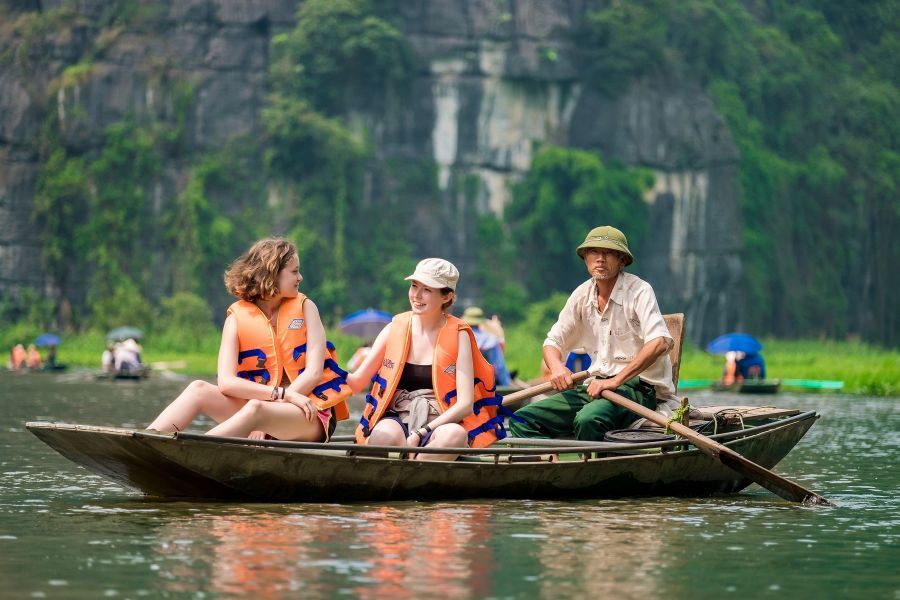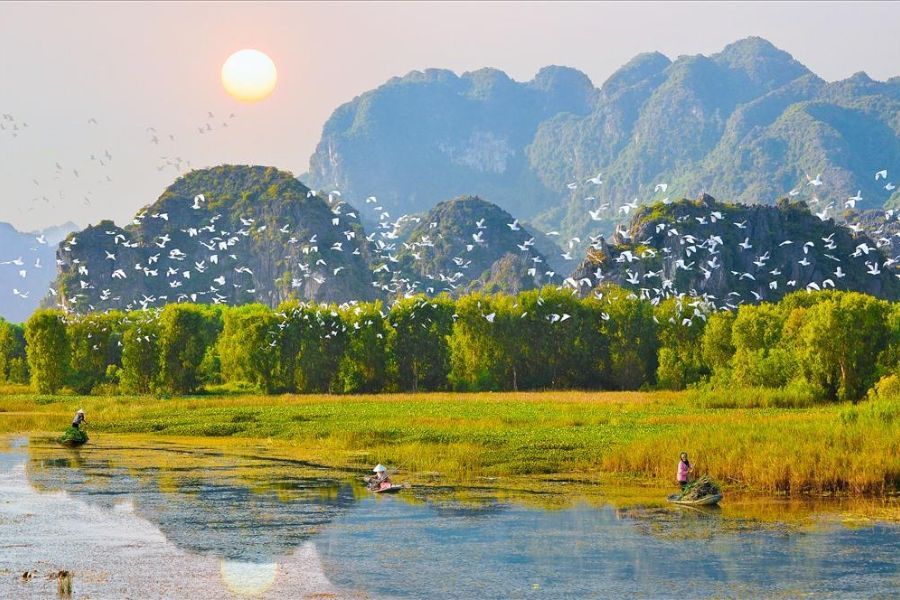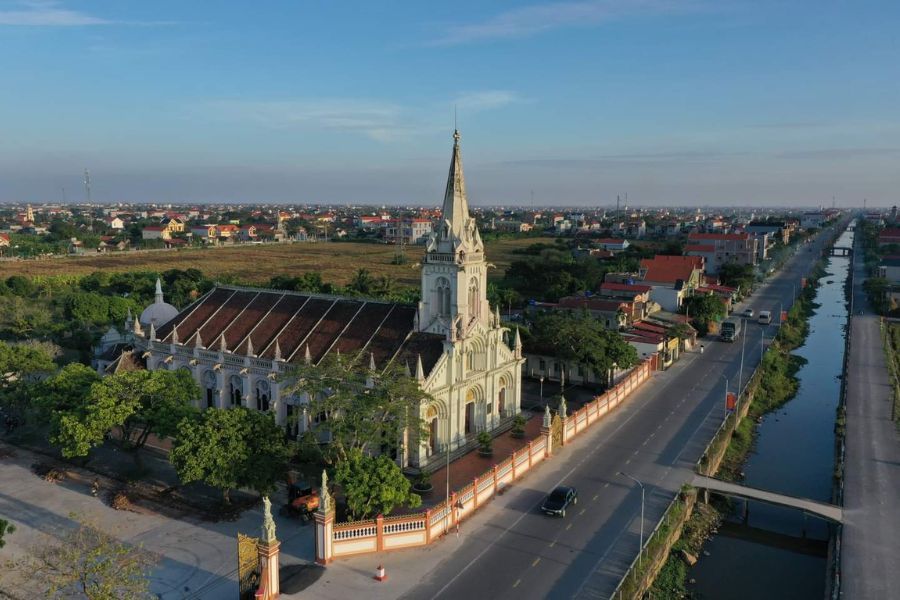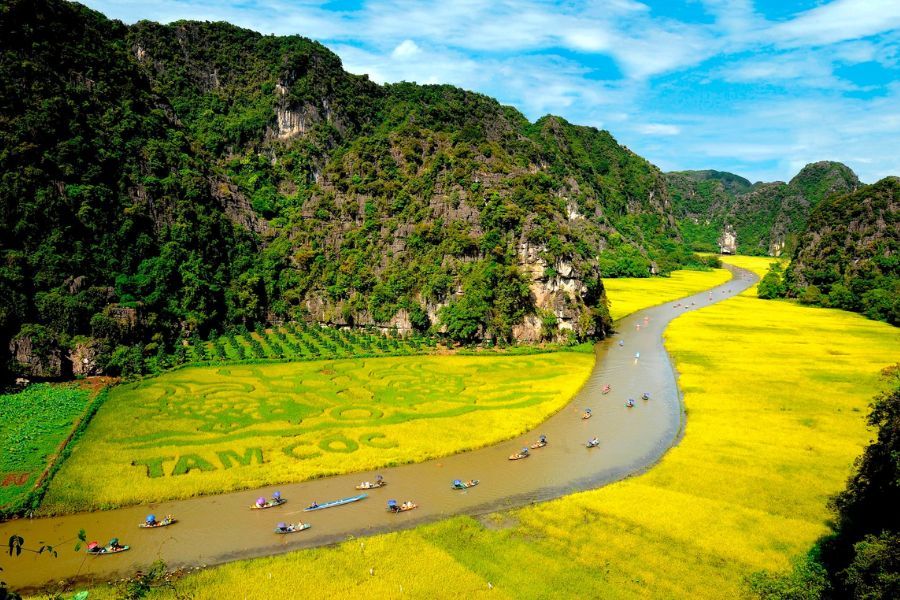Discover The Spiritual Beauty Of Bich Dong Pagoda In Vietnam
Bich Dong Pagoda is an ancient, tranquil temple nestled among limestone mountains in Ninh Binh, complete with caves and beautiful nature. Visitors can experience a combination of nice nature, spiritual vibe, and beautiful scenic views.
Table of Contents
ToggleIntroduction To Bich Dong Pagoda
Bich Dong Pagoda is one of the most recognizable spiritual sites in Ninh Binh, at the foot of a limestone mountain and surrounded by lush green countryside. Known as “The Second Most Beautiful Cave under the Southern Sky”, this ancient pagoda is not only a religious place, but also a cultural heritage dating back to the 15th century.
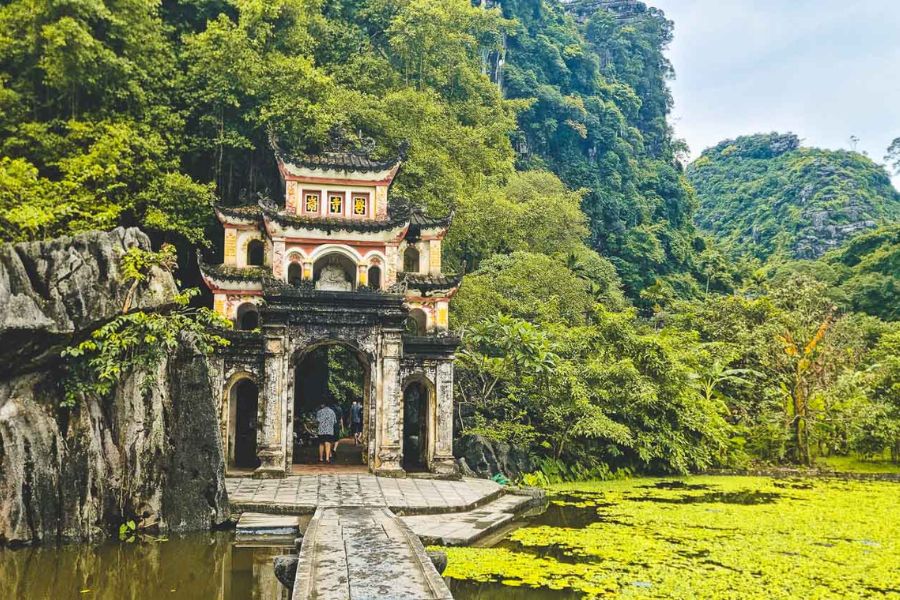
Bich Dong has three pagodas built into the mountain, Ha, Trung, and Thuong, on different levels of the mountain, providing both spiritual serenity and stunning views. Visitors come here for the unique cave structure, peaceful ambiance, and beautiful landscape of rice fields and limestone cliffs. Bich Dong is a must-see on any Tam Coc-Bich Dong, Ninh Binh itinerary, even if you’re just going for history, culture, or nature!
History Of Bich Dong Pagoda
The Bich Dong Pagoda was built in 1705 by two monks, Tri Kien and Tri The, during the reign of Le Du Tong, king of Vietnam. As part of their mission to educate the country about Buddhism, the two monks traveled through the country and found the majestic and tranquil landscape of Bich Dong Mountain, Ninh Binh.
Amazed and inspired by its beauty and peace, they decided to find an old temple in the area and to restore it as a new spiritual site. They developed a unique pagoda system of three tiers, built into the mountain: Lower (Ha), Middle (Trung), and Upper (Thuong) pagoda.
In 1707, the monks cast a sizable bronze bell, which still hangs in the cave temple. Later in 1774, Lord Trinh Sam came to Bich Dong when he witnessed the great green mountains and limestone caves and was inspired to name the site “Bich Dong,” which means “Green Cave.” Since then, the pagoda has become not only an important religious landmark, but also one of the first representations of a harmonious relationship with nature and architecture in the spiritual heritage of Vietnam.
Unique Architecture Of Bich Dong Pagoda
Bich Dong Pagoda is famed for its beautiful traditional Vietnamese temple architecture. The pagoda is built against a vertical limestone mountain, and it is a consummate example of religious architecture in a natural setting. The pagoda complex consists of three separate pagodas, the Ha pagoda, the Trung pagoda, and the Thuong pagoda, which were created at three separate altitude levels on the mountain.
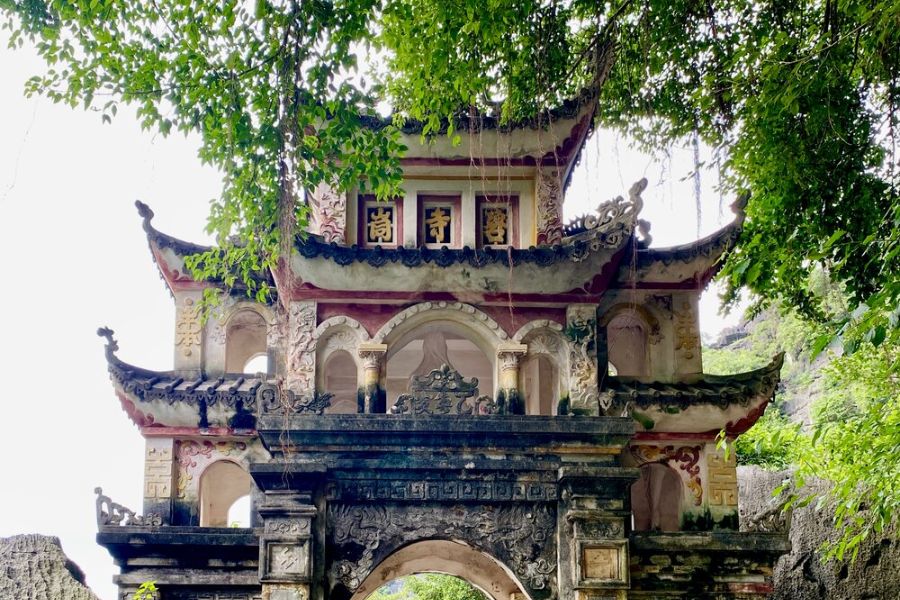
The pagodas are ingeniously arranged around three natural cave formations: Bich Dong and Dark Cave (dry caves) in mid-mountain, and Xuyen Thuy Cave (a water cave) below ground level. Bich Dong’s sacred structures in nature allowed it to function not only as a religious space but also as a destination of tranquil retreat.
Bich Dong Pagoda draws attention with its layout in the shape of a Vietnamese Han character “Tam” (which means “three”), an architectural scheme that stands out from the “Cong”-shaped temples consisting of connected halls. Here, you have three pagodas that are all built separately. Bich Dong Pagoda creates a sequence of ascent for visitors and encourages an uplifting spiritual experience from the lower pagoda to the top.
6 Cultural Experiences You Shouldn’t Miss
Tucked between the limestone mountains and thick green forest, Bich Dong Pagoda is more than a beautiful place to visit. It is a place of history and spiritual heritage. If you want to get in touch with the spirit of Bich Dong Pagoda, don’t miss these must-see cultural experiences.
Walking the Path to Bich Dong Pagoda
As you enter the pagoda, you will notice the quiet stone path with tall trees along the way. This made for a perfect beginning to your visit with a serene tone set. The morning sun filtered through the branches and leaves, casting dancing shadows on the ground and the wildflowers on either side of the way, and the birds chirping made the walk feel completely timeless and sacred.
The pathway continued through the trees and limestone cliffs, while the rooftops of the pagodas occasionally emerged between branches, hinting at the spirituality ahead. This was not just a walking path to explore Bich Dong. This was a meditation, foreshadowing the harmony of natural beauty at Bich Dong.
Unveil The Enigmatic Dark Cave (Dong Toi)
Above Chua Trung lies Dong Toi (Dark cave), a concealed area enshrouded in myths and mysteries. After a brief ascent, you’ll enter a dim room barely illuminated by intermittent electric light and natural light. Inside, you’ll be greeted with a majestic bronze bell cast in 1707, which, though somewhat rusty, hangs suspended quietly and still resonates with the voices of yore. The stone walls are also home to some glorious stone bas-reliefs, flying dragons, star beings, and hybrid creatures frozen in motion.
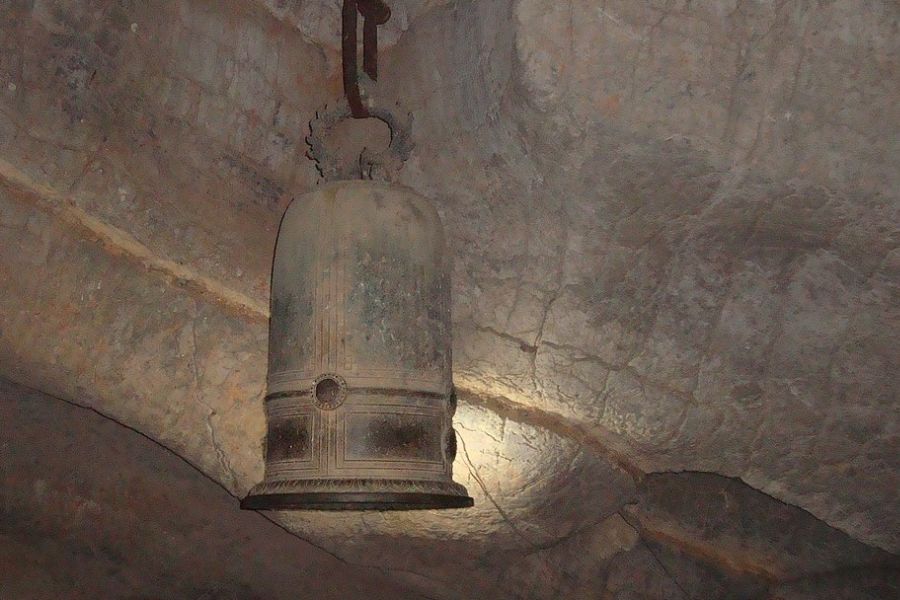
Once your eyes have adapted to poor visibility, you start to see more, statues of Amida Buddha and Bodhisattvas, and a simple altar to Quan Am nestled in a corner alcove. Here, you don’t just see art and devotion, you feel all the echoes and shadows of it.
Visiting Chua Ha – The Lower Pagoda
At the mountain’s base, Chua Ha – the first and most accessible site of the Bich Dong complex – is of Dinh-style temple architecture in the traditional Vietnamese configuration. The pagoda exhibits the elegant simplicity of classical temple construction, with gently curving tiled roofs, incense-laden wooden beams, and sculpted stone columns that ground you in history. Inside is grace, statues of the Buddha, antiquated altars, and the Han characters “Mao Co Than Thanh”, a poetic representation of the ancient hallowed ground. Visitors often linger here longer than expected due to the quiet atmosphere and reverence that permeates the area.
Climb To Chua Trung – The Middle Pagoda
You can continue your spiritual journey by climbing up the 80 stone, winding steps to the Chua Trung (Middle Pagoda), which hangs halfway up the mountainside. As the height increases, the temperatures decrease, and the views widen. Chua Trung is partly carved from the mountainside where the elements of nature meet sacredness. It feels so much like part of the earth that you can’t help but be welcomed in and welcomed home, through the roof and doorway that open to the elements.
The cave naturally shelters worshippers; it simultaneously gives those who visit the cave an oasis from the world. Look above the main altar to see that the two Han characters captured in stone read “Bich Dong”, associated with Lord Trinh Sam, the ruler who renamed the temple in the 18th century. Pause here and feel suspended between heaven and earth for a moment.
Go To Chua Thuong – The Upper Pagoda
At the high and mighty end of the valley, near the peak of the mountain, is Chua Thuong – the highest and most amazing of the three pagodas. To get there, you must climb up more than 40 steep steps cut into the rock side of the cliff where it meets the earth. When you arrive at the pagoda, you are surrounded by tranquil woods that honor Quan Am, the Goddess of Mercy, housed in wooden halls with beautiful swooping tiled roofs.
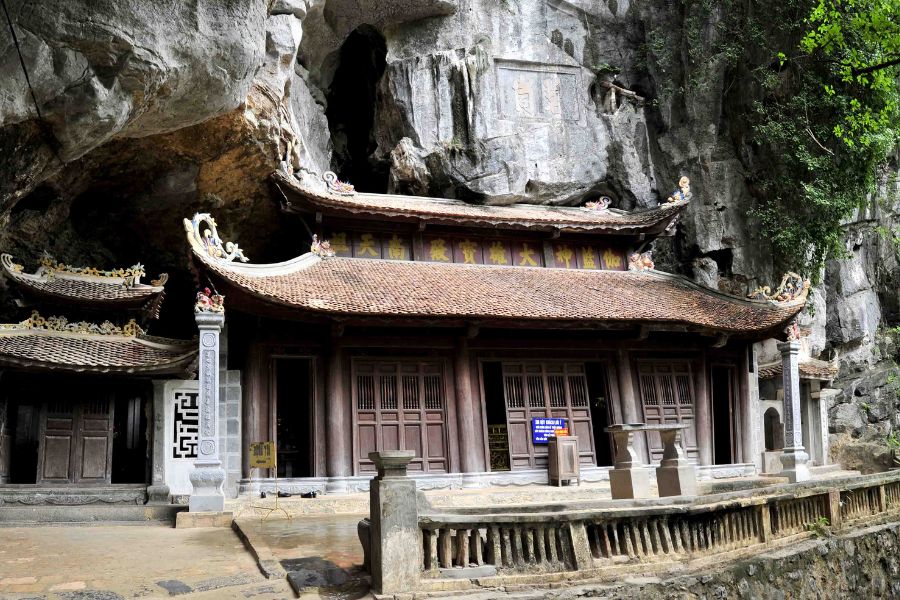
Here, you have a complete 360-degree view of the beautiful landscape, the stones in the valley that are the five peaks of Ngu Nhac Son mountain range, the green rice fields below, and we even spotted a unique flower named Son Kim Cuc, a pretty yellow flower that only grows between the cracks of the cliff and under very careful conditions.
Sail Through Xuyen Thuy Cave
Beneath the pagoda compound lies Xuyen Thuy Cave, the water cave in the region, which offers a wholly different way to experience Bich Dong. You will board a small sampan (a small wooden boat) and glide through the cave’s underground water aisle of 350 meters. The cave is shaped in a gentle demi-lune, gracefully curved beneath the mountain. Water has flowed over millennia to shape the stone into sensual arches and natural forms.
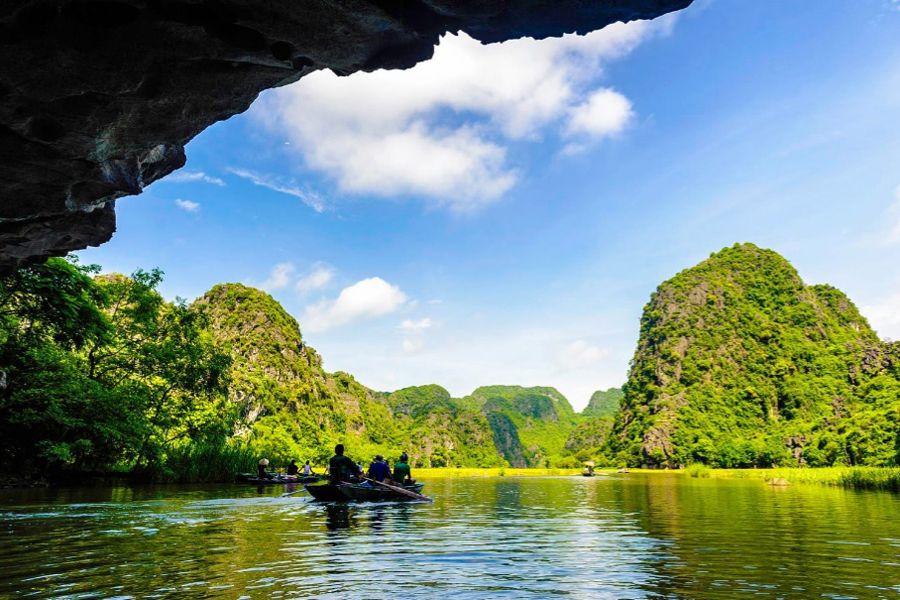
The cool breezes, rhythmic drip of water, and dancing light on the rock ceiling create a dream-like meditative state. Also, as your boat emerges out of the other side of the mountain, you feel as though you are not just traveling through stone, but also through time and spirit.
Entrance Fee
Entry to Bich Dong Pagoda itself has no cost, but because the pagoda is intricately linked to Tam Coc – Bich Dong Scenic Area, an entrance ticket is required to visit the site. Additionally, the ticket price usually includes a boat trip along the beautiful Tam Coc river caves, which makes the trip worthwhile for visitors. As of now, here’s the ticket price list:
| Visitor Category | Ticket Price (VND) |
| Adults (over 1.3 meters) | 250 |
| Seniors (60 years and above) | 120 |
Opening Hours
Bich Dong Pagoda is open daily from 7:30 AM to 4:30 PM.
The ideal time to visit is in spring (January to March) and early summer (May to June), when Ninh Binh’s weather is pleasantly cool, making it great sightseeing weather. These months are both good to enjoy the tranquillity of the pagoda and the natural scenery of the beautiful Tam Coc – Bich Dong area.
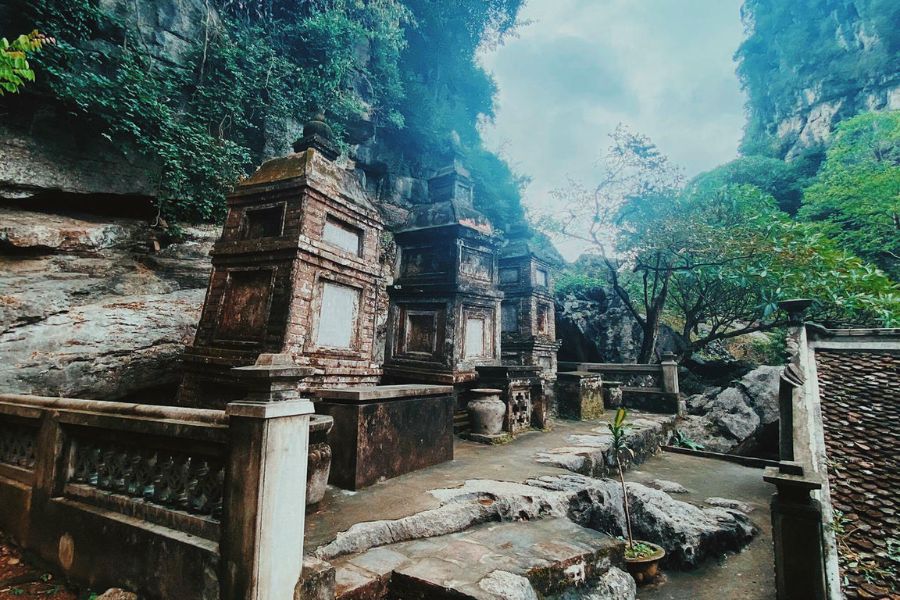
How To Get To Bich Dong Pagoda
It is easy to access Bich Dong Pagoda due to its proximity to Tam Coc in Ninh Binh. There are various transit options available to choose from, depending on where you’re starting from.
| Transport | Details | Price | Duration |
| Limousine Van | Comfortable and direct. Pick-up at your hotel. | 150,000 – 250,000 VND | 1.5 – 2.5 hours |
| Local Bus | Departs from Giap Bat or My Dinh Bus Station | 70,000 – 150,000 VND | 2.5 – 3 hours |
| Train | Train from Hanoi Station to Ninh Binh Station | 100,000 VND (one-way) | 2.5 hours |
| Motorbike/Car | Rent a vehicle and ride via National Highway 1A | Varies | 2 – 3 hours depending on traffic |
Things To Know Before Traveling To Bich Dong Pagoda
It can be wise to plan your visit to Bich Dong Pagoda beforehand to help ensure a respectful and enjoyable visit. Here are some suggestions to help make your trip enjoyable:
- Dress appropriately: As a sacred site, you should dress modestly and respectfully, avoid shorts, sleeveless tops, or revealing clothes.
- Pack a small day bag: A light day bag containing your phone, wallet, water, a light snack, and sunscreen is all you will need.
- Be mindful of amenities: There are a few refreshment options close to the pagoda; however, no choice will be better than whatever you brought, so bring your water and light snacks.
- Bring cash: It is customary to leave a small donation (or more) in the offering box inside the pagoda. You may also want cash for parking or to buy something small locally.
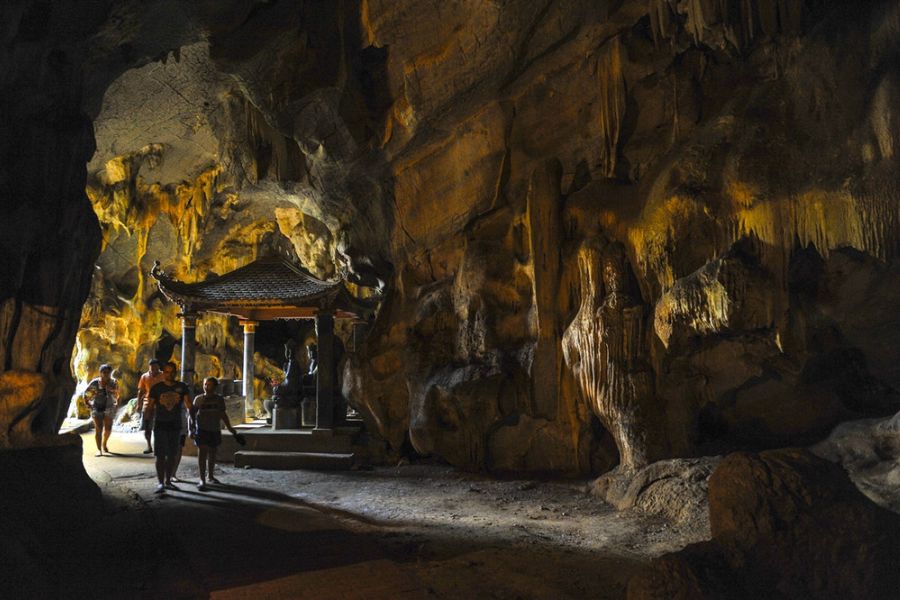
- Be respectful: be mindful of your noise, do not litter, and pay attention to the serene/spiritual aspects of this site and other visitors who have come to be at peace.
- Be a wise buyer: If you want to buy something local as a gift, check it out online and look for embossed stamps or signs of vendors who are reliable and have good quality products.
- Pick the right shoes: This seems obvious, but wear comfortable walking shoes or sports shoes with enough grip, especially if you are visiting during the rainy season when stone paths can become slippery.
Final Thoughts: Is Bich Dong Pagoda Worth Visiting?
Bich Dong Pagoda is so much more than a beautiful stop. It’s a quiet haven where nature and spirituality converge. From the dramatic cave temples and age-old architecture, to the calm views of rice paddies and limestone peaks, each turn along the journey provides a sense of quiet contemplation and wonder. Are you ready to explore this hidden gem of Ninh Binh? Let Seni World help you discover the best of Tam Coc – Bich Dong and more.








